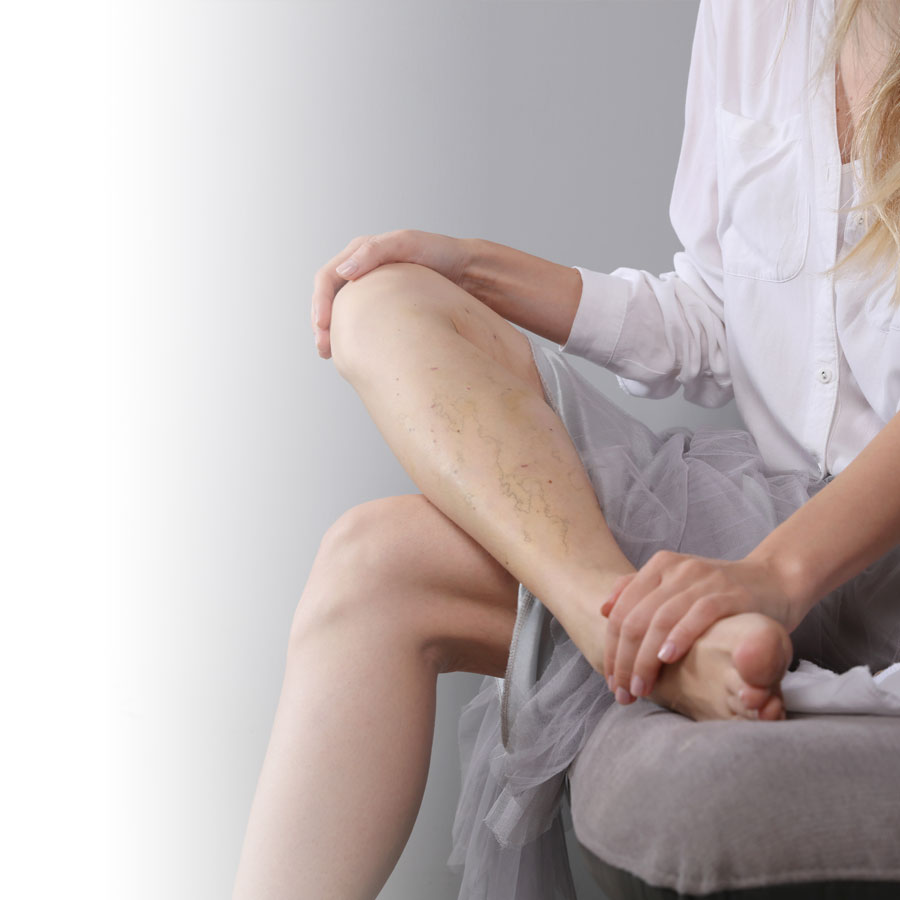Varicose veins result from poor blood circulation in the legs. They can be prevented using certain measures, and treated if they appear.
Veins and their blood transport function
The venous system consists of a set of blood vessels of different sizes, like small pipes, its function is to transport deoxygenated blood to the heart. The blood is then pumped to the lungs to eliminate waste and be reoxygenated. Once it is purified, the blood returns to the heart, which in turn pumps it to different organs and parts of the body.
Sometimes, veins are unable to perform their function as vessels and carriers to ensure that blood returns to the heart. When fighting gravity and other difficulties, like loss of elasticity, veins dilate to get the blood to its destination. Varicose veins, which are permanently dilated veins, are a physical manifestation of this problem.
The appearance of varicose veins
We speak of varicose veins when superficial veins are affected. In general, varicose veins become more and more dilated, apparent, and thus inconvenient, over time. The term "spider veins" is used to describe varicose veins that affect very small veins that appear close to the surface of the skin.
Most varicose veins and spider veins appear on the legs. Varicose veins are usually enlarged and twisting. They can be accompanied by swelling, itching, redness, and a feeling of pain, heaviness or heat. Spider veins look like small spider webs that are bluish-red in colour on the surface of the skin and can sometimes evoke the image of a map.
If varicose veins worsen, they can lead to cutaneous fibrosis (hardening of the skin), venous ulcers, and even blood clots.
Risk factors
It is estimated that 5 to 30% of adults, including three times more women than men, will have varicose veins at a point in time. Heredity plays a significant role in the predisposition to varicose veins.
Other risk factors include:
- pregnancy
- sedentariness
- standing or sitting for long periods of time
- a blood clot in the leg
- a leg injury
- obesity, and
- aging
Graduated compression socks
Compression socks help the blood in the small superficial veins to flow to the main deeper veins by exercising a gradual pressure on the leg. By improving blood circulation, these socks preserve the integrity of small veins and thus, prevent varicose veins. For an optimal effect, they apply more pressure at the ankle and gradually become less tight on the upper leg.
There are several types of compression socks available on the market, in a variety of fabrics, sizes, and colours. Some models go up to the knee or to the thigh, while others are stockings. It is essential to choose the right model, size, and degree of compression (expressed in millimetres of mercury or mm Hg).
Ask your pharmacist for advice if you would like to purchase compression socks, sometimes called support socks. He/she can help you make the right choice and explain how to make optimal use of them. Depending on your situation, it could be necessary to seek your doctor's advice.
Other prevention methods
The following measures can help prevent the appearance of varicose veins.
- Exercise regularly.
- Eat healthy and avoid salt.
- Maintain a healthy weight.
- Don't sit or stand without moving for too long.
- Avoid wearing clothing or boots that are too tight, and high heels.
- Avoid long baths or saunas that are too hot.
- Place your feet and legs in an elevated position for about 30 minutes, at least twice a day.
- Do the following exercise several times a day: point your toes and then bring them in towards you alternately for a few minutes.
Treatment
Speak to your doctor if you notice varicose veins on your legs. He/she can evaluate the situation and determine the best treatment for you, if necessary.
Treatment methods include:
- medication
- sclerotherapy (injection of a product in the vein which narrows the blood vessel wall)
- laser therapy or radiofrequence therapy
- surgery
Don't hesitate to speak to your pharmacist for additional information about varicose veins or compression socks.

